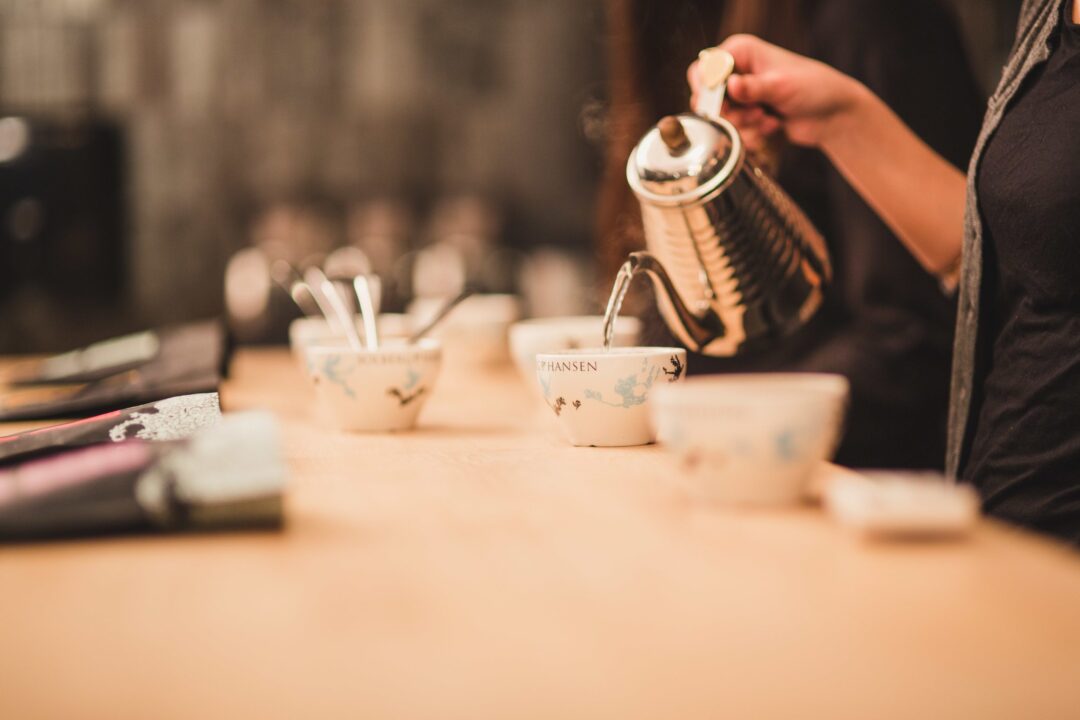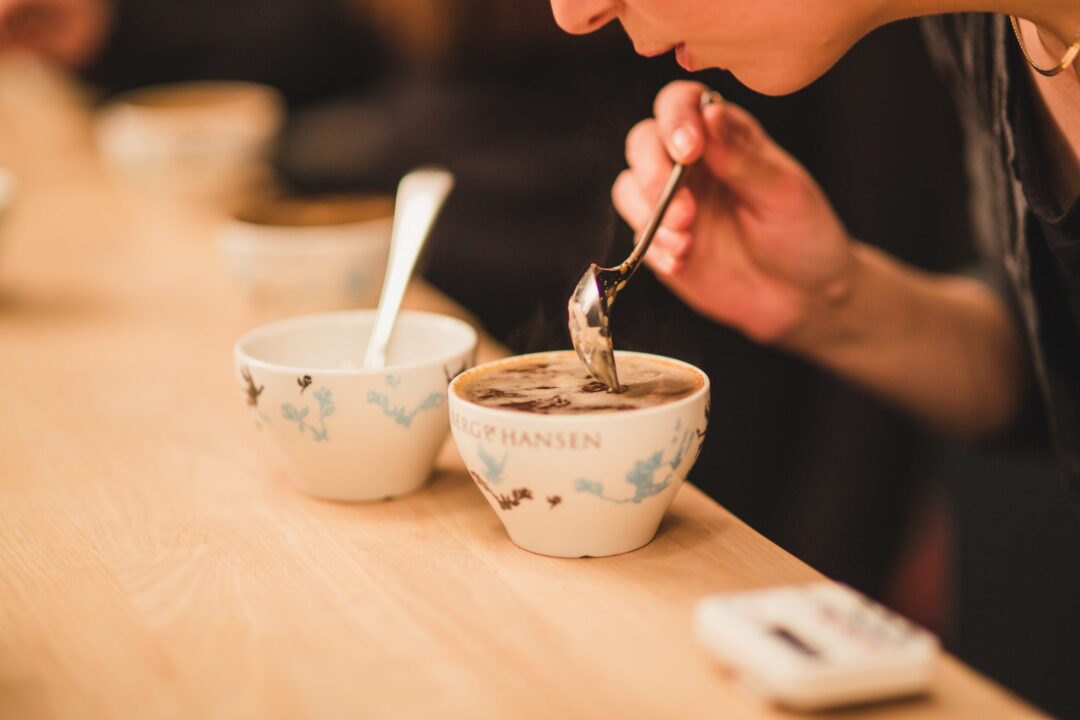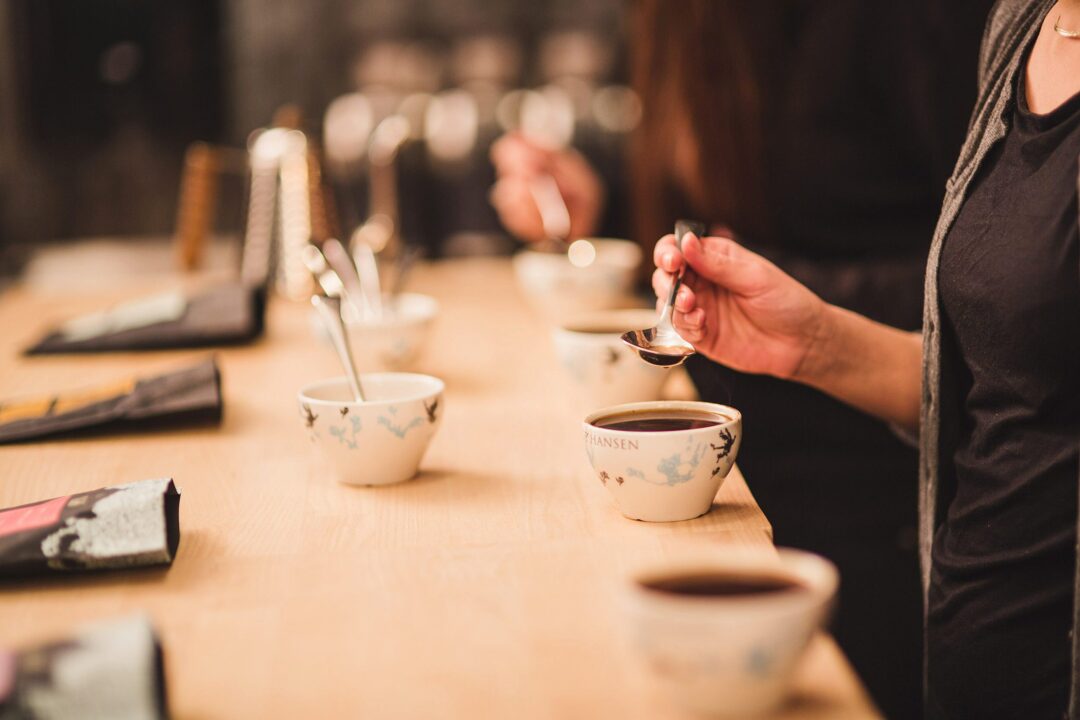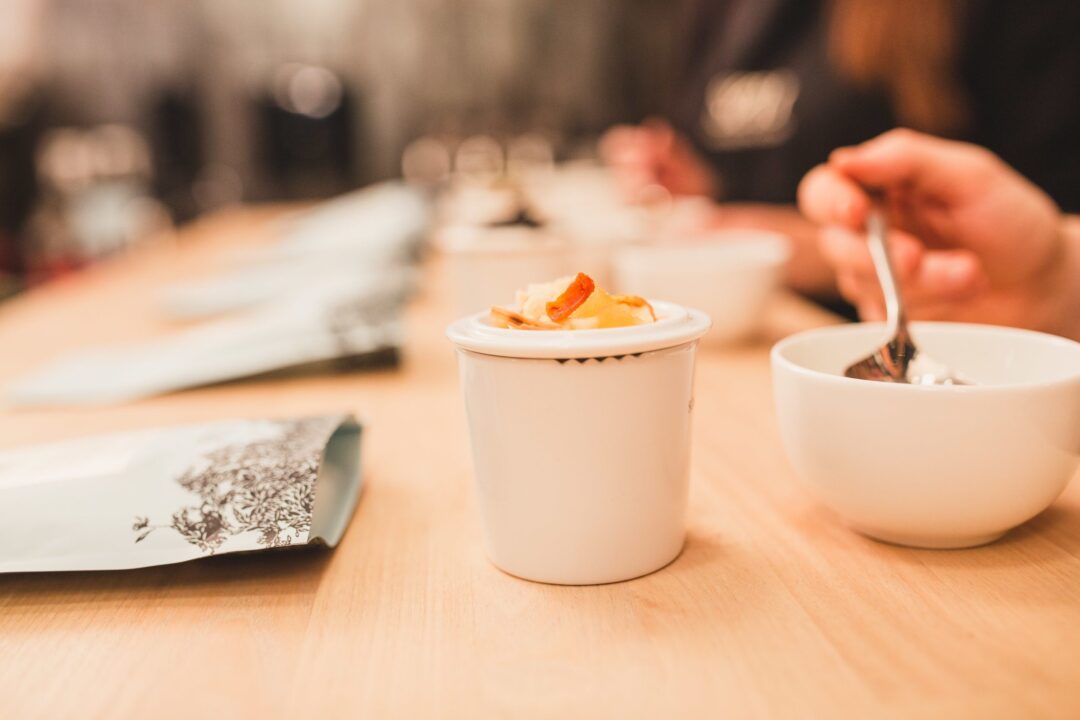Cupping is the quality and taste testing of coffee and tea. When cupping, you assess aroma, taste, mouthfeel and quality, and put this into words to create a flavor description. Through cupping, you become even more familiar with the many nuances of the world's coffee and tea flavors, as well as your own preferences.
Cupping of coffee

Find the different types of coffee you want to taste. Boil water, find cups, spoons and something to take notes with.
Place the cups one after the other along the edge of the table so that they are easily accessible. Start with the lightest coffee and finish with the darkest.
Brewing guide per cup:
- Measure out 12 g of coffee (6 g of coffee per dl of water).
- Grind the coffee at the grind level between the filter and the press pot.
- Pour into an empty cup that holds 2 dl.
- Smell the ground coffee and note what smells you find.
- Slowly fill the cup with boiled water (92-96 degrees) right up to the edge of the cup. Make sure all the coffee gets wet.
- Wait for 4 minutes.
Brew your coffee at the same pace from cup to cup from the moment you start pouring water. Start with the first cup and work your way up.

After 4 minutes, break the surface of the coffee crust with a spoon. There are separate cupping spoons for cupping, but you can also use a tablespoon.
When breaking the surface, gently stir with the spoon from the coffee crust down to the bottom of the cup before bringing the spoon up to the surface again. This is done three times. The coffee will then sink to the bottom and brewing will stop. Smell the aromas rising from the cup as you break the surface. Start with the first cup and work your way up at a steady pace.
Then use two spoons to remove the foam that remains on top. This is to prevent a bitter taste. Rinse the foam off the spoons in a cup of hot water between each use.
Wait 8-10 minutes for the coffee to cool down and reach the right flavor temperature. If the coffee is too hot, you can burn yourself, and the flavors are easier to detect when it has cooled down a bit. Use these minutes to smell the coffee again and note what aromas you find.
Ready, set, slurp!

Then the tasting can begin. Make sure that the grounds at the bottom are not swirled up when you taste the coffee. Try to draw air into your mouth by slurping when tasting. This brings out the flavors better, especially the volatile aromas.
Feel free to taste each cup several times over time. Rinse the spoon in hot water between each taste.
Use a pen and paper and write down the flavors you find along the way. For example, is the coffee sweet, fruity or acidic? Does it feel rich or light in the mouth? Are there any distinct flavors that stand out, such as orange, spice or cocoa? Does the smell remind you of flowers, or is it vanilla? Feel free to discuss and compare tasting notes. In this way, you will get to know different coffee flavors and perhaps find new favorites.
Cupping of tea

For cupping tea, follow the instructions for each tea in terms of grams, dl, temperature and brewing time. Remember to wait until the tea has cooled down before tasting.
The actual smelling and tasting is done in the same way. Make a note of the flavors you find along the way and slurp away.
Cup proposals
There are no limits to the types of cuppings you can put together. You can taste your way through all or part of a range, or you can choose fewer types of tea or coffee to focus on. It's common to taste new products as they come in, often against existing products.
Other suggestions for coffee cupping include tasting several types of coffee from the same continent or country, coffee with different processing methods, or tasting the continents' coffee flavors against each other. You can read more about the world of coffee flavors in our flavor map.
Suggestions for cupping tea can be the different processing methods from white to black tea, several pure teas within, for example, the green tea category or different types of fruit teas that can be tasted both hot and cold. The only limit is your imagination.
At Solberg & Hansen, we do pre-purchase cuppings to evaluate quality, when developing roast profiles and to give the coffee a flavor description. We also test all our daily roasts as part of our quality control.
In addition, we hold coffee courses where cupping plays the main role, and we have cupping sessions with customers for those who want them. Taste is constantly evolving and is a big part of our everyday work - in the quest for the world's best cup.
Happy cupping and good luck!